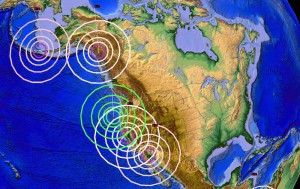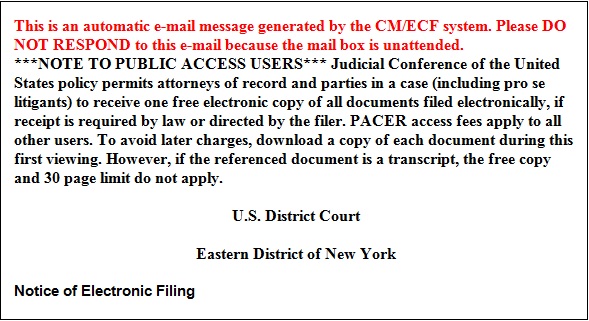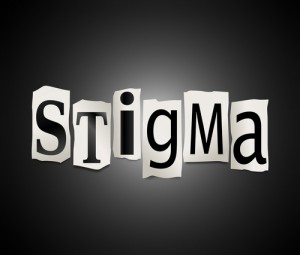Settlement Means No Determination of Take-Home, Punitive Damages Questions
By admin on October 15, 2015
A settlement reached after oral argument at the California Court of Appeal will likely leave unresolved two questions: (1) whether the consumer expectations test can impose liability on a manufacturer for “take-home” exposure, and (2) whether there should be liability, including punitive damages liability, for take-home exposure that occurred before any scientific studies indicating that take-home exposure was a potential health risk. Despite the proliferation of lawsuits alleging this fact pattern, no California appellate case has ever held that a product manufacturer owes a duty of care to household members of persons exposed to their products.
Grigg v. Owens-Illinois, Inc. involved a woman who allegedly contracted mesothelioma from being exposed to asbestos dust brought home the clothes of her husband, an Owens-Illinois insulation clothes, in the 1950s. “Take-home exposure” lawsuits are increasingly common in the world of asbestos litigation, as well as in cases alleging exposure to other allegedly harmful substances. The jury awarded Mrs. Grigg approximately $27 million, including $11 million in punitive damages against Owens-Illinois. The case presented the as yet unanswered question of the scope of a manufacturer’s duty to family members of persons who work with their products, in the context of the consumer expectations test for strict products liability.
At oral argument in September 2015, the panel appeared skeptical of the plaintiffs’ argument that there is no person who is outside the class of persons who could recover under a consumer expectations theory in a take-home exposure case. The court suggested that the plaintiffs’ argument was a rule of absolute liability because it “doesn’t matter” who the injured person is or what are the details of their relationship to the take-home vector. On the other hand, the court inquired of Owens-Illinois’ counsel why there should be a distinction between the well-established liability for injuries to bystanders to work with a manufacturer’s product and liability for injuries to persons exposed by take-home exposure.
The case also presented punitive damages issues. Owens-Illinois argued that (as all experts in the case agreed) no published medical literature indicated hazards to family members of insulation workers until years after Mrs. Grigg’s take-home exposure, and that studies which Plaintiffs argued reflected the required “actual knowledge” to support punitive damages were conducted to determine hazards to workers themselves, not to their family members. Plaintiffs countered that reports of testing conducted prior to Mrs. Grigg’s exposure indicated that asbestos dust from insulation was “hazardous” and that “every precaution” should be taken to avoid breathing that dust. The panel’s feelings about these arguments were less clear than about the ultimate liability issue, but the court did press plaintiffs’ counsel to confirm that these studies were the only evidence he believed supported the punitive damages award.
Ted Pelletier of the Kazan law firm argued for the plaintiffs, and Robert Riley of Schiff Hardin argued for Owens-Illinois.
The parties informed the court on October 6, 2015 that they settled the case. Even so, the court retains jurisdiction over the case and may issue an opinion. While that is unlikely, it will happen, if at all, within 90 days from the date of argument. If it does not, these issues will remain unresolved in California for the time being.


 For those who prefer “organic” products, the Organic Foods Production Act of 1990 (“OFPA”) and the subsequent regulations set forth in the National Organic Program (“NOP”) govern the use of this term and provide a degree of assurance to consumers that foods and cosmetics labeled as such are indeed composed of organic ingredients. The bottom line is that these regulations require products to be certified by an accredited certifying agency and contain no more that 5% in weight of non-organic ingredients. That 5%, however, must be composed solely from ingredients included in the NOP’s National List of acceptable non-organic products, such as vitamins and minerals. What happens when these “organic” products contain ingredients that are not on the National List? We question how any rational consumer could feel aggrieved merely because a de minimis quantity of non-organic ingredients slipped into a product. Nevertheless, aggrieved consumers, or their lawyers, seeking to challenge a particular certification as misleading or deceptive may look to state law to intervene. This is exactly what occurred in
For those who prefer “organic” products, the Organic Foods Production Act of 1990 (“OFPA”) and the subsequent regulations set forth in the National Organic Program (“NOP”) govern the use of this term and provide a degree of assurance to consumers that foods and cosmetics labeled as such are indeed composed of organic ingredients. The bottom line is that these regulations require products to be certified by an accredited certifying agency and contain no more that 5% in weight of non-organic ingredients. That 5%, however, must be composed solely from ingredients included in the NOP’s National List of acceptable non-organic products, such as vitamins and minerals. What happens when these “organic” products contain ingredients that are not on the National List? We question how any rational consumer could feel aggrieved merely because a de minimis quantity of non-organic ingredients slipped into a product. Nevertheless, aggrieved consumers, or their lawyers, seeking to challenge a particular certification as misleading or deceptive may look to state law to intervene. This is exactly what occurred in  The failure of a single lawyer to read a court order on the ECF docket can result in tragedy. However, when eighteen lawyers are emailed an ECF notification from the court and no one reads the attached documents, it becomes a tragicomedy.
The failure of a single lawyer to read a court order on the ECF docket can result in tragedy. However, when eighteen lawyers are emailed an ECF notification from the court and no one reads the attached documents, it becomes a tragicomedy. Accutane was approved by the Food and Drug Administration in 1982 to treat a severe form of acne, which can cause disfigurement on the face and back of those affected. Crohn’s Disease is a serious chronic inflammation of the gastrointestinal tract that can cause gastrointestinal bleeding, among other symptoms, and carries an increased risk of cancer. Most scientific literature has concluded that the cause of CD and IBD remains unknown.
Accutane was approved by the Food and Drug Administration in 1982 to treat a severe form of acne, which can cause disfigurement on the face and back of those affected. Crohn’s Disease is a serious chronic inflammation of the gastrointestinal tract that can cause gastrointestinal bleeding, among other symptoms, and carries an increased risk of cancer. Most scientific literature has concluded that the cause of CD and IBD remains unknown. Stigma claims raise conundrums for the courts. On the one hand, courts desire to make a distressed plaintiff whole. On the other hand, courts want to award only those damages that are proven with reasonable certainty. Industry groups argue that stigma damages should not be permitted because they subject industry to the whim of any landowner able to obtain speculative testimony about the future economic impact of a temporary condition – even a condition that a regulatory agency considers satisfactorily addressed. These arguments take on even greater poignancy where the claimant’s property has not been physically impacted and the purported stigma is claimed to derive from mere proximity to a contaminated parcel.
Stigma claims raise conundrums for the courts. On the one hand, courts desire to make a distressed plaintiff whole. On the other hand, courts want to award only those damages that are proven with reasonable certainty. Industry groups argue that stigma damages should not be permitted because they subject industry to the whim of any landowner able to obtain speculative testimony about the future economic impact of a temporary condition – even a condition that a regulatory agency considers satisfactorily addressed. These arguments take on even greater poignancy where the claimant’s property has not been physically impacted and the purported stigma is claimed to derive from mere proximity to a contaminated parcel.